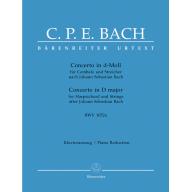目前位置: 首頁 > 國外出版社 > Bärenreiter (騎熊士版) > Instrumental > Others > Christensen 18th Century Continuo Playing
Christensen 18th Century Continuo Playing
A Historical Guide to the Basics
商品描述
商品標籤
In recent years, efforts to achieve interpretations that do justice to the criteria of “historical performance practice” have become de rigueur in the world of early music.
Not only has this affected the instruments and performance techniques used by soloists, it also impinges on the “musical foundation”: the accompaniment. In his figured bass tutor Jesper Bøje Christensen, a teacher at the Schola Cantorum in Basle , shows readers how to produce stylistically accurate figured bass realizations, whether written beforehand or improvised in performance. He has taken an unusual approach: the various figured bass manuals of the early eighteenth century – by Dandrieu , St. Lambert , Heinichen , Telemann and others – are clearly organized and logically structured and contain practical tips for playing from a figured bass. Christensen has put these sources together and added comments and written-out examples of his own.
In this way his tutor not only shows how musicians played at the time, but takes a further step of crucial importance: it succinctly summarizes the way figured bass was taught and studied, thereby creating models for players today.
Contents
·Introduction
·Chapter I - French Figured Bass from Roughly 1690 to 1720 Experts from Michel de St. Lamber: Nouveau Traité de l' Accompagnement de Clavecin (1707), Excerpts from Jean-François Dandrieu: Principies de l' Accompagnement de Clavecin (1719)
·Chapter II - German Figured Bass from Roughly 1710 to 1735 Excerpts from Johann David Heinichen: Der General-Bass in der Composition (Dresden, 1728) and Georg Philipp Telemann: Singe-, Spiel- und General-Bass- Übungen (Hamburg, 1733-4)
·Chapter III - Other Essential Aspects of Figured Bass Playing
·Postface
·Sources and References
我的標籤





